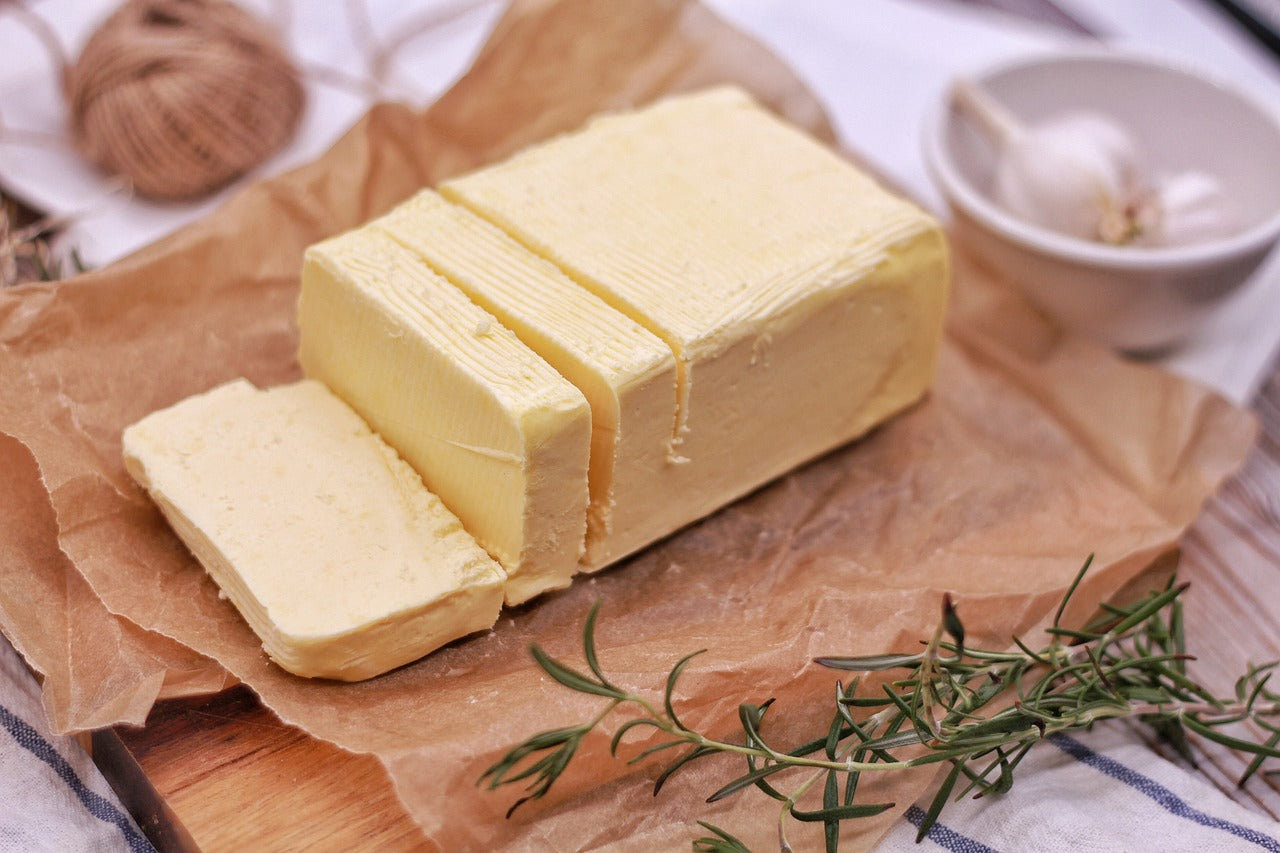
The Health Benefits Of Butter
Butter is one of those things that you have been taught to both love and hate.
You love it because it makes everything taste awesome.
You hate it because the health authorities have told you for the past however many decades that butter is the enemy of good health.
Well, you may consider this article a gateway to enjoying butter guilt-free. There will be some conditions to that recommendation but as you’ll see butter is not the terrible food you’ve been told it is.
Why Butter Is Better Than You Thought
Butter is not awful.
In fact, if you get the right kind and enjoy it alongside other healthy foods you could put it in the classification of “superfoods.”
Why?
Because butter is rich in nutrients that are essential for human flourishing.
However, not all butter is the same. The quick rule of thumb is if the butter comes from conventionally raised cows (think, your local grocery store brand of butter) it is likely to have an unhealthy nutrient profile.
But if you get it from a pasture-raised animal allowed to eat a natural diet of grass and other staples, free from the application of hormones and other chemicals, then the butter you eat could be marked as some of the best.
Now, let me show you what makes grass-fed butter (that’s the kind we’re talking about in this article) so special.
1 - It is Loaded in Butyrate:
I doubt you’ve ever scoured an ingredient list on a package of food to look for butyrate content, but, as God would have it, butyrate is one of those fatty acids that changes the game when it comes to health.
And grass-fed butter has more of it than conventionally produced butter.
Butyrate is a fatty acid that has been shown to do a number of things in the body.
- Boost metabolic rate
- Helps to improve sensitivity to insulin
- Reduces LDL cholesterol
- Revs up mitochondrial activity
- May reduce inflammation
- Helps to cultivate increases in healthy bacteria
Plus much more.
While you can get butyrate in conventional butter, estimates are that there’s 100-200% more by weight in grass-fed butter.
2 - More Conjugated Linoleic Acid (CLA):
Another fat that I love (and have written about before) is CLA.
CLA is similar to butyrate in that it can have marked effects on various aspects of our health for the positive, and again, grass-fed butter is far richer in CLA than conventionally raised butter. As much as 500% more!
Allow me to give you a list that covers facts about CLA that are hard to ignore.
- Indicated to prevent the growth of cancer:
- Helps aid in weight loss
- Anti-inflammatory
- May help to prevent the onset of type-2 diabetes
- Lowered risk of heart disease
Plus many others.
CLA is not an EFA (essential fatty acid) like Omega-3, but it can help augment health positively and for that, you could consider grass-fed butter a staple.
3 - Offers High Levels of Vitamin K2
Anyone who’s been following my work will know already how much I love vitamin K2.
I’d prefer no one have to take the vitamin K2 supplements we manufacture, and if more people ate grass-fed butter then I’d expect there wouldn’t be as big of a need for supplements like it.
We know from studying cultures that rely on grass-fed butter along with other sources of K2, that their k2 levels are highly elevated when compared to populations who don’t ingest that much grass-fed butter.
The benefits of K2 consumption are numerous:
- Lowers the incidence of heart disease
- It can help to boost immune system strength
- Lowers the chance of bone fractures
- Acts as a powerful anti-inflammatory
- Strengthen bones and teeth
- Positively affects mental faculties
And more.
Grass-fed butter is one of the best sources of K2 for modern Americans as many other sources aren’t as tasty as butter.
4 - Contains Copious Amounts of Vitamin A:
An essential vitamin to total health, vitamin A, or (beta carotene) is one of those nutrients in grass-fed butter that you’re going to get in copious amounts.
“Studies suggest that grass-fed butter may be even higher in beta carotene than regular butter.
In one experiment, butter made from the milk of 100%-grass-fed cows had the highest amount of beta carotene, while butter from cows that were fed a mixed diet of grass and corn had the lowest amounts.
Beta carotene is also a well-known and potent antioxidant. Antioxidants help defend your cells from potential damage caused by unstable molecules called free radical.
A wealth of observational studies have associated a higher intake of foods rich in beta carotene to a reduced risk of several chronic diseases, such as age-related macular degeneration (AMD), type 2 diabetes, and certain types of cancer.”
The deep yellow to orange color of grass-fed butter is a reflection of its beta-carotene content and that is why you’d be wise to get more of it in your diet ASAP.
5 - Grass-Fed Just Tastes Better:
When you open up a package of conventional butter next to grass-fed butter you’ll see the difference.
And that difference leads to a better taste.
We eat food for taste as much as we eat it for health (and more than likely most people select taste over health), so grass-fed butter is a clear winner here.
What Not to Eat with Butter and Why Butter Substitutes Stink
Butter is a health food.
However, if you eat it alongside a high volume of refined foods (seed oils, sugars, preservatives, etc.) it may not be good for you.
The key to enjoying butter is to eat a diet filled with other healthy foods, things I’ve written extensively about on my blog.
Also, butter substitutes like margarine and others are terrible for you when compared to butter. As almost all of the are made from seed oils I cannot in good conscience recommend a butter substitute like that at all.
If you have a dairy allergy, ghee is a good alternative, or if you want other kinds of oils in your diet then consider things like coconut oil, olive oil, avocado oil, etc.



